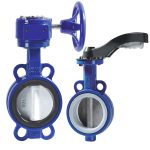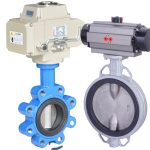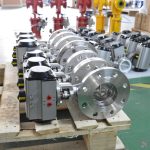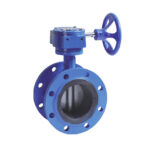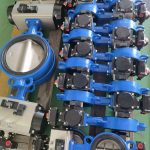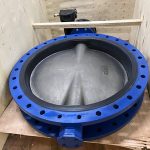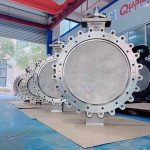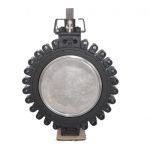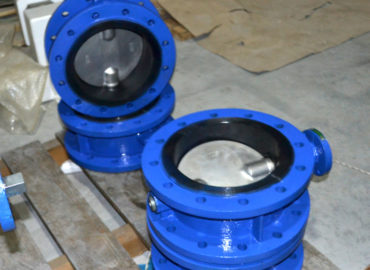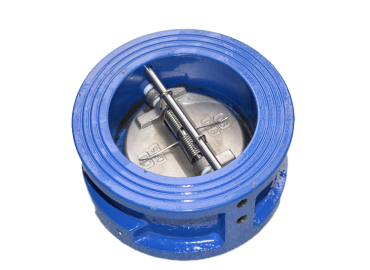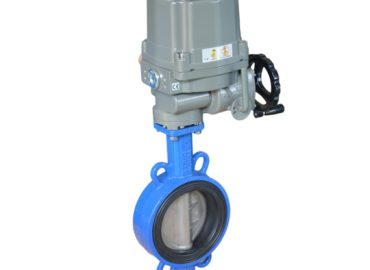Butterfly valves, an integral component of various industrial systems, play a crucial role in controlling the flow of liquids or gases. Among the different types of butterfly valves, high-temperature butterfly valves stand out due to their exceptional ability to perform under extreme temperature conditions. These specialized valves are designed using materials that can withstand significant thermal stress, making them an excellent choice for industries dealing with high-temperature environments. This blog post delves into the advantages of high-temperature butterfly valves, highlighting their durability, efficiency, cost-effectiveness, and versatility, and why they are increasingly becoming the preferred choice in industrial systems worldwide.
Introduction
high temp butterfly valve have emerged as a game-changer in various industrial systems, offering several significant advantages. One of the primary benefits is their exceptional durability and reliability. These valves are specifically designed to withstand high temperatures without compromising their functionality or structural integrity. This makes them an ideal choice for industries that operate under extreme temperature conditions, such as power plants, oil refineries, and chemical processing facilities. Furthermore, high-temperature butterfly valves are highly efficient. They can handle high-pressure flows seamlessly, reducing the energy consumption of the system and enhancing its overall performance. This efficiency also translates into cost-effectiveness. While the initial investment might be higher than standard butterfly valves, they offer lower maintenance costs and a longer lifespan, resulting in significant cost savings in the long run. Lastly, these valves are incredibly versatile. Their ability to operate effectively even under high-temperature conditions allows them to be used in a wide range of industrial applications. Whether it’s controlling the flow of steam in a power plant or managing the flow of hot liquids in a chemical processing facility, high-temperature butterfly valves prove their worth. In summary, the advantages of high-temperature butterfly valves – durability, efficiency, cost-effectiveness, and versatility – make them an indispensable asset in modern industrial systems.
Brief explanation of what butterfly valves are and their application in industrial systems.
Wafer butterfly valve are a fundamental component in numerous industrial systems. They belong to the family of quarter-turn rotational motion valves and are primarily used to regulate, start, or stop fluid flow. The design of these valves involves a rotary disc that controls the flow of fluids in a piping system, making them an efficient solution for regulating fluid flow. This type of valve is used across a variety of industries including pharmaceutical, chemical, and food industries. They are also used in oil and natural gas industries, manufacturing sectors, and even in residential settings.
One of the key advantages of butterfly valves is their cost-effectiveness. Their design requires less material compared to other types of valves, making them a more economical choice. Furthermore, recent technological advancements have improved the ability of these valves to throttle more precisely and perform well under high-temperature and high-pressure conditions.
In addition to their cost and efficiency benefits, butterfly valves are also valued for their versatility. They can be used in applications that require large volume capacities and are particularly useful for flow control, regulation, and service on/off switching. Despite having an obstructed port as part of their design, they are still widely used in diverse applications such as water supply, wastewater treatment, fire protection, and more.
In conclusion, the use of butterfly valves in industrial systems presents numerous benefits including durability, cost-effectiveness, and versatility, making them an essential asset in modern industrial operations.
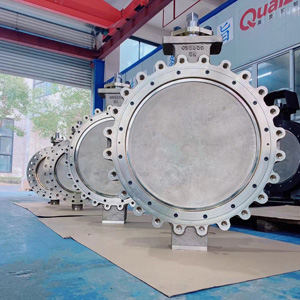
Overview of the blog post.
In this blog post, we will delve into the world of industrial systems to explore the significance and benefits of high-temperature butterfly valves. We’ll start by providing a detailed understanding of what these valves are and how they function under extreme temperature conditions. From there, we’ll highlight the key advantages of using high-temperature butterfly valves, such as their durability, efficiency, cost-effectiveness, and versatility. To bring these benefits to life, we’ll present a real-world case study showcasing these valves in action within an industrial setting. Finally, we’ll offer some guidance on how to choose the right high-temperature butterfly valve for your specific needs. Whether you’re an industry professional, a student, or simply someone interested in industrial systems, this comprehensive overview will provide valuable insights into the important role of high-temperature butterfly valves.
Understanding high temp butterfly valve
high temp butterfly valve are a specialized type of butterfly valve designed to operate effectively under extreme temperature conditions. They are engineered using materials that can withstand significant thermal stress, such as high-grade stainless steel, making them highly resistant to warping or deformation. Unlike standard butterfly valves that might fail under high temperatures, these valves maintain their structural integrity and continue to perform optimally even when exposed to intense heat. Their design typically includes a disc mounted on a rotating shaft. When the valve is fully closed, the disc blocks the passageway, and when it’s open, the disc rotates to allow fluid or gas to flow freely. The ability to handle high temperatures makes these valves particularly useful in various industries, including power generation, oil and gas, and chemical processing. These industries often involve processes that generate a substantial amount of heat, requiring equipment that can withstand such conditions. High-temperature butterfly valves not only meet this requirement but also offer efficient and reliable performance, making them a preferred choice in these sectors.
Detailed explanation of high temp butterfly valve, their design, and how they work.
High-temperature butterfly valves are a specialized type of quarter-turn valve designed to regulate the flow of fluids in high-temperature environments. These valves consist of a few key components: the valve body, the disc, the valve stem, and the seat. The disc is the primary component that controls the fluid flow. When the valve is closed, the disc blocks the passageway, and when it’s open, the disc rotates to allow fluid or gas to flow freely.
The design of these valves is typically such that they fit between two pipe flanges, often with protruding lugs that provide bolt holes matching those in the pipe flange. This efficient design allows for easy installation and maintenance.
One of the unique features of high-temperature butterfly valves is their ability to function effectively under extreme temperature conditions. They can handle temperatures between 0 and 400F and are constructed from high-grade materials capable of withstanding thermal stress. This makes them suitable for applications in various industries, including power generation, oil and gas, and chemical processing.
Moreover, unlike certain other types of valves, butterfly valves can be used for throttling or regulating flow as well as in the full open and fully closed position. This versatility, coupled with their durability and high performance, makes high-temperature butterfly valves an integral part of many industrial systems.
Discuss the materials used in high temp butterfly valve that enable them to withstand extreme conditions.
High-temperature butterfly valves are designed to withstand extreme conditions, and this is made possible by the types of materials used in their construction. The body of a butterfly valve can be made from a variety of materials including cast iron, ductile iron, aluminum, carbon steel, stainless steel, and even exotic metals.
The most common material used for the construction of these valves is carbon steel due to its high-temperature resistance and durability. The WCB grade of carbon steel is particularly suitable for high-temperature use, while LCC (Low Carbon Content) steel can be used at low (sub-zero) temperatures.
Additionally, the disc material plays a crucial role in the performance of these valves. Aluminum bronze is widely accepted as a disc material in butterfly valves due to its heat treatable nature and strength comparable to steel.
The seat materials of these valves also vary and include options like EPDM and nitrile, each with its own advantages. Some high-performance butterfly valves even use a rigid PTFE or metal seat that is mechanically retained inside the valve body.
Finally, in marine applications, corrosion and temperature-resistant materials like super alloys, ceramics, and composites are often used due to their exceptional resistance to corrosion and high temperatures.
In conclusion, the choice of materials used in high-temperature butterfly valves is critical to their ability to function effectively under extreme conditions.
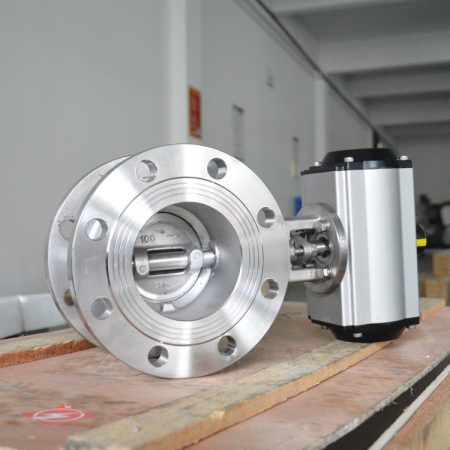
Advantages of high temp butterfly valve
High-temperature butterfly valves bring several significant advantages to industrial systems, particularly those operating under extreme temperature conditions. Foremost among these is their robustness and durability. Made from high-grade materials such as stainless steel, these valves are designed to withstand intense heat without losing their structural integrity or functionality. This means they can reliably control the flow of fluids, even in environments where temperatures might compromise the performance of standard butterfly valves. Efficiency is another key advantage. High-temperature butterfly valves are engineered to maintain a consistent performance under high-pressure flows, which can enhance the overall operational efficiency of an industrial system. Furthermore, these valves are cost-effective in the long run. While their initial purchase cost may be higher than that of regular butterfly valves, their extended lifespan and reduced maintenance needs result in significant cost savings over time. Their versatility further adds to their appeal. High-temperature butterfly valves can be used in a wide range of applications, from power generation and oil and gas industries to chemical processing plants, making them a versatile solution for various high-temperature operations. Lastly, due to their quarter-turn operation, these valves provide quick opening and closing, enabling better control over fluid flow. This combination of durability, efficiency, cost-effectiveness, versatility, and control makes high-temperature butterfly valves an invaluable resource in many industrial systems.
Durability and Reliability
High-temperature butterfly valves offer significant advantages in industrial systems, particularly in terms of durability and reliability. These valves are constructed from high-grade materials such as stainless steel and carbon steel that can withstand extreme temperatures, ensuring their durability even under intense thermal stress. This means they retain their structural integrity and continue to perform optimally even when exposed to high heat and pressure, a common scenario in many industrial processes. In addition to their durability, high-temperature butterfly valves are also highly reliable. They are designed to provide consistent, accurate control over fluid flow, regardless of the operating conditions. This reliability is crucial in industries like power generation, oil and gas, and chemical processing, where any disruption in flow control can lead to significant operational issues. By offering a combination of durability and reliability, high-temperature butterfly valves help enhance the efficiency and safety of industrial systems, making them an invaluable component in these settings.
Discuss how high temp butterfly valve are designed to withstand extreme temperatures, making them more durable and reliable in industrial settings.
High-temperature butterfly valves are meticulously designed to withstand extreme temperatures, which makes them exceptionally durable and reliable in industrial settings. The materials used in their construction, such as carbon steel or stainless steel, are known for their high thermal resistance and strength, enabling these valves to function effectively even under intense heat. This heat-resistant design ensures that the structural integrity of the valves remains uncompromised, contributing to their overall durability. In addition, the disc and the seat of these valves, which are the key components in controlling fluid flow, are often made from materials with high melting points. This allows them to maintain their shape and functionality, even when exposed to high temperatures. Furthermore, some high-temperature butterfly valves feature a double offset or triple offset design, which reduces the friction between the disc and the seat during operation, thereby minimizing wear and tear, and extending the valve’s lifespan. Therefore, by virtue of their design and the materials used, high-temperature butterfly valves prove to be highly durable and reliable, capable of performing consistently well in demanding industrial environments.

Efficiency
High-temperature butterfly valves significantly contribute to the efficiency of industrial systems. This is primarily due to their ability to maintain optimal performance under high-pressure flows and extreme temperatures. Their robust design, made from materials like stainless steel or carbon steel, ensures they can withstand intense heat and pressure without compromising their functionality. This means they can reliably control the flow of fluids, even in conditions where standard valves might fail, thereby preventing disruptions in the system and improving overall operational efficiency. Additionally, the quarter-turn operation of these valves facilitates quick opening and closing, allowing for better control over fluid flow and reducing the energy required for valve operation. The compact design of butterfly valves also contributes to their efficiency as they require less space compared to other types of valves, making them ideal for installations where space is a premium. Furthermore, their simple design and construction mean they require less maintenance, which can result in significant time and cost savings. All these factors make high-temperature butterfly valves an efficient solution for various high-temperature industrial operations.
Explain how these valves can handle high-pressure flows efficiently, reducing energy consumption and improving overall system performance.
High-temperature butterfly valves are adept at handling high-pressure flows efficiently, thereby reducing energy consumption and enhancing overall system performance. The core of this efficiency lies in their design and operation mechanism. With a disc mounted on a rotating shaft, these valves can regulate flow by simply rotating the disc to the desired position. When fully opened, the disc aligns with the direction of the flow, offering minimal resistance and allowing fluids to pass through freely. This results in lower pressure drops across the valve and less energy required to maintain the flow, leading to reduced energy consumption. When it comes to controlling high-pressure flows, the robust construction of these valves, often made from materials like stainless steel or carbon steel, enables them to withstand the associated stresses without compromising their functionality. Furthermore, their quick actuation time allows for rapid adjustments in response to changes in system pressure, ensuring efficient flow control under varying operating conditions. By efficiently controlling high-pressure flows, these valves help to maintain the stability of the system, prevent potential damage due to pressure surges, and ultimately contribute to improved system performance.
Cost-Effectiveness
High-temperature butterfly valves offer several advantages in industrial systems. They are designed to withstand extreme conditions of high temperature and pressure, as pointed out by. This makes them suitable for use in demanding environments such as oil and gas processing and power generation, where they often encounter corrosive applications.
One of the key benefits of these valves is their efficiency. They provide reasonable flow control in a compact and lightweight design, making them ideal for various applications. Furthermore, butterfly valves are generally less expensive due to their simpler design and lesser weight, contributing to cost-efficiency.
Another advantage is their durability. High seal butterfly valves, in particular, are built with robust materials, allowing them to resist harsh conditions and chemicals effectively. Additionally, they have minimal maintenance requirements and are easy to operate, further enhancing their appeal in industrial settings.
In terms of functionality, butterfly valves can be custom-made to fit different applications, making them highly versatile. However, it’s worth noting that their pressure withstanding capability is comparatively less than gate valves, suggesting they are more suitable for low-pressure applications.
In conclusion, the advantages of high-temperature butterfly valves in industrial systems lie in their efficiency, durability, cost-effectiveness, and versatility, making them a valuable component in many industrial operations.
Analysis of the cost benefits of using high temp butterfly valve, including lower maintenance costs and longer lifespan.
High-temperature butterfly valves bring several cost benefits to industrial systems. One of the primary advantages is their lower maintenance costs. These valves have a simple design and minimal maintenance requirements, which results in significant cost savings over time. They are also easy to install and operate, further reducing labor costs associated with valve operation and maintenance.
In terms of upfront costs, butterfly valves are often less expensive due to their lighter weight and simpler design compared to other types of valves, such as ball valves. This makes them a cost-effective choice for large-scale projects in various industries.
Another cost benefit comes from their versatility. High-seal butterfly valves, for example, work well in different systems, allowing for the purchase of fewer valves, which can lead to additional cost savings.
Furthermore, these valves have a longer lifespan due to their durability and ability to withstand extreme temperatures and pressures. This reduces the need for frequent replacements, contributing to long-term cost savings.
Lastly, high-temperature butterfly valves contribute to more cost- and energy-efficient solutions by avoiding oversized actuators for control valve packages.

In summary, the cost benefits of using high-temperature butterfly valves include lower maintenance costs, lower upfront costs, cost savings from versatility, longer lifespan, and more efficient control valve packages.
Versatility
High-temperature butterfly valves are highly versatile, making them a valuable asset in a variety of industrial systems. Their ability to operate under extreme temperature conditions makes them suitable for a wide range of applications, from power plants and oil refineries to chemical processing facilities. Furthermore, they can handle different types of fluids, including gases, liquids, and semi-liquids, which adds to their versatility. The design of these valves allows for both throttling and isolating capabilities, meaning they can control flow rate as well as completely shut off flow when needed. This dual functionality is not common in many other types of valves, making high-temperature butterfly valves a more flexible choice for many systems. Moreover, they come in various sizes and materials, allowing them to be customized to the specific requirements of the system they are being used in. Whether it’s a corrosive environment or a high-pressure system, there is likely a high-temperature butterfly valve designed to meet the needs of the application. This level of versatility makes high-temperature butterfly valves an essential component in many industrial systems.
Explain how these valves can be used in various industrial applications due to their ability to withstand high temperatures.
High-temperature butterfly valves are incredibly versatile, finding use across a plethora of industrial applications due to their ability to withstand high temperatures. One of the primary applications is in power generation plants, particularly those that utilize steam, where these valves reliably control the flow of hot steam under high pressure. Their heat resistance also makes them ideal for use in oil and gas industries, where they can effectively handle the high-temperature fluids often encountered in refining processes. Similarly, in chemical processing plants, these valves are used to regulate the flow of various chemicals, many of which can be corrosive or operate at elevated temperatures. High-temperature butterfly valves also find application in HVAC systems, aiding in efficient heat management by regulating the flow of hot air or water. In metallurgical industries, these valves can effectively control the flow of molten metal or slag, both of which operate at extremely high temperatures. Thus, the ability of these valves to withstand high temperatures, combined with their durability and reliability, makes them suitable for a wide range of industrial applications.
Case Study: high temp butterfly valve in Action
A pertinent case study demonstrating the effectiveness of high-temperature butterfly valves is their implementation in a large-scale oil refinery. The refinery was dealing with an issue where their existing valves could not withstand the high temperatures and pressures involved in the oil refining process, leading to frequent failures and costly downtime. After a careful evaluation, the refinery decided to replace their existing valves with high-temperature butterfly valves. These new valves, made from robust materials like stainless steel, were designed to withstand the extreme conditions inherent in the oil refining process. Once installed, the high-temperature butterfly valves demonstrated their superior performance immediately. Despite the high temperatures and pressures, these valves maintained optimal functionality, ensuring a smooth and uninterrupted flow of oil through the system. Their quick actuation time also allowed for rapid adjustments to changes in system pressure, thereby maintaining stability and preventing potential damage due to pressure surges. Furthermore, the simple design and construction of these valves meant that they required less maintenance, resulting in significant time and cost savings for the refinery. Over time, the refinery reported lower energy consumption, reduced maintenance costs, and improved overall system performance, all attributable to the installation of high-temperature butterfly valves. This case study perfectly illustrates the benefits of using high-temperature butterfly valves in industrial systems, particularly in applications involving extreme temperatures and pressures.
Present a real-world example of an industrial system that has benefited from using high-temperature butterfly valves.
A real-world example of the benefits of using high-temperature butterfly valves can be seen in the power generation industry, specifically within thermal power plants. These plants generate power by heating water to produce steam, which then drives a turbine to generate electricity. This process involves extremely high temperatures and pressures, requiring a valve that can withstand these conditions while providing efficient flow control. One such thermal power plant decided to replace its existing valves with high-temperature butterfly valves. After the installation, the plant reported a noticeable improvement in system performance. The high-temperature butterfly valves were able to handle the intense heat and pressure without any degradation in performance. They provided efficient flow control, allowing the plant to optimize its steam production and thereby improve its overall power generation capacity. Additionally, the plant noted a decrease in maintenance costs, as the new valves required less frequent servicing due to their durable construction. The high-temperature butterfly valves also had a longer lifespan compared to the previous valves, reducing the plant’s replacement costs. This example clearly demonstrates how high-temperature butterfly valves can bring about significant improvements in the performance and efficiency of industrial systems.
How to Choose the Right high temp butterfly valve
Choosing the right high-temperature butterfly valve requires careful consideration of several factors. First, it’s crucial to understand the specific requirements of your system. Consider the temperature and pressure conditions the valve will be subjected to. High-temperature butterfly valves are designed to withstand extreme heat, but their maximum operating temperature varies depending on their construction material and design. Therefore, ensure the valve you choose is rated for the highest temperature it will encounter in your system.
Second, consider the type of fluid the valve will be controlling. Some fluids may be corrosive or abrasive, which can wear down certain materials over time. In such cases, a valve made from a more robust material like stainless steel or a specially coated one might be necessary.
Third, think about the valve’s size and installation requirements. The valve should fit seamlessly into your system without requiring extensive modifications. Also, take into account the ease of installation and maintenance. A valve that’s easy to install and maintain can save you significant time and resources in the long run.
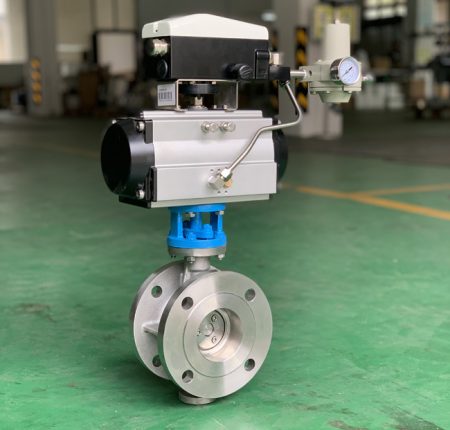
Fourth, consider the valve’s actuation mechanism. Depending on your system’s needs, you might require a manual, electric, pneumatic, or hydraulic actuator. Each has its advantages and considerations, so choose the one that best suits your system’s operational requirements.
Finally, while cost is a factor, it shouldn’t be the only one. A cheaper valve might seem like a good deal initially, but if it requires frequent maintenance or replacement, it could end up costing more in the long run. Instead, focus on finding a high-quality, durable valve that provides the best value for money.
Remember, the right high-temperature butterfly valve can enhance your system’s performance, improve efficiency, and reduce maintenance costs. Therefore, it’s worth taking the time to make an informed decision. If in doubt, consult with a reputable valve manufacturer or supplier who can guide you in choosing the most suitable valve for your application.
Provide tips on what factors to consider when choosing a high temp butterfly valve, such as material, size, pressure rating, and manufacturer reputation.
When choosing a high-temperature pneumatic butterfly valve, several factors should be taken into account to ensure optimal performance and longevity. The material of the valve is one of the most critical factors. Materials like stainless steel or other alloys are typically used for their ability to withstand high temperatures and resist corrosion. The size of the valve is another important consideration. It must align with the pipe size in your system for proper installation and operation.
The pressure rating of the valve is also crucial. Ensure that the valve can handle the maximum pressure it will encounter in your system. A valve with an inadequate pressure rating can pose significant safety risks and operational issues.
The reputation of the manufacturer is another vital factor. Choose valves from manufacturers known for their quality and reliability. Look for companies with positive customer reviews, proven track records, and excellent after-sales service.
Lastly, consider the valve’s actuation mechanism (manual, pneumatic, electric, etc.), as this will determine how the valve operates within your system.
Remember, the cheapest option isn’t always the best. Consider the valve as an investment in your system’s efficiency and longevity. Do your research, ask questions, and don’t hesitate to consult with industry experts to ensure you choose the right high-temperature butterfly valve for your specific needs.
Conclusion
In conclusion, high-temperature butterfly valves play a pivotal role in various industrial systems due to their superior performance under extreme conditions. Their ability to withstand high temperatures and pressures makes them an invaluable component in industries such as power generation, oil and gas, chemical processing, and more.
These valves are not only robust and durable but also versatile, capable of handling different types of fluids and offering both throttling and isolation capabilities. Their design simplicity further benefits industries by reducing maintenance needs and ensuring easy installation, thereby saving time and resources. Moreover, their availability in numerous sizes and materials allows for customization to meet the specific requirements of each application.
Real-world examples from thermal power plants and oil refineries have demonstrated the significant improvements that can be achieved through the use of high-temperature butterfly valves. These include enhanced system performance, reduced maintenance costs, and increased overall efficiency.
However, it’s important to remember that selecting the right high-temperature butterfly valve requires careful consideration. Factors such as the material, size, pressure rating, and the reputation of the manufacturer should all be taken into account. The chosen valve should align perfectly with the system’s operational requirements and environmental conditions. While cost is a factor, the focus should be on finding a high-quality, durable valve that provides the best value for money.
In a world where efficiency and reliability are paramount, high-temperature butterfly valves stand out as a testament to engineering ingenuity. Their continued use across various industries underscores their effectiveness and importance in the realm of industrial systems. As technology continues to evolve, we can expect these valves to adapt and continue serving as a critical component in our quest for industrial advancement.
So whether you’re operating a power plant, running a chemical processing facility, or managing an HVAC system, consider the high-temperature butterfly valve. Its versatility, durability, and efficiency might just be what your system needs to reach new heights of performance.
Recap the main points discussed in the blog post.
In this blog post, we delved into the importance and advantages of high temp butterfly valve in various industrial settings. We discussed their robustness, durability, and ability to withstand extreme temperatures and pressures, making them invaluable in industries such as power generation, oil and gas, and chemical processing. The versatility of these valves was also highlighted, with their capability to handle different types of fluids. Real-world examples were presented to demonstrate the significant improvements that can be achieved through their use, such as enhanced system performance and reduced maintenance costs. We also provided tips on selecting the right high-temperature butterfly valve, emphasizing the need to consider factors like material, size, pressure rating, and manufacturer reputation. Finally, the post concluded by reiterating the role of these valves as a testament to engineering ingenuity and their potential to boost efficiency and reliability in various industrial systems.
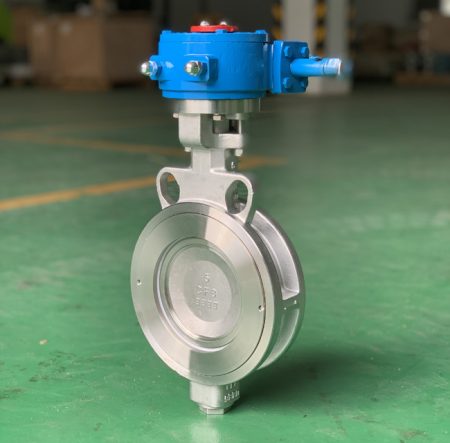
End with a call-to-action encouraging readers to consider high temp butterfly valve for their industrial systems.
As we wrap up this discussion on the advantages of high temp butterfly valve, it’s clear that these robust, versatile devices can significantly enhance the performance and efficiency of various industrial systems. If you’re seeking to improve your system’s durability, reduce maintenance costs, and ensure optimal operation under extreme conditions, then high-temperature butterfly valves are a solution worth considering. Don’t settle for less when it comes to your system’s performance. Investigate the benefits of these valves for yourself, consult with experts, and make an investment that could revolutionize your operations. Remember, in the world of industrial systems, every component matters, and choosing high-temperature butterfly valves could be the decision that takes your system to new heights of efficiency and reliability. Make the switch today!



